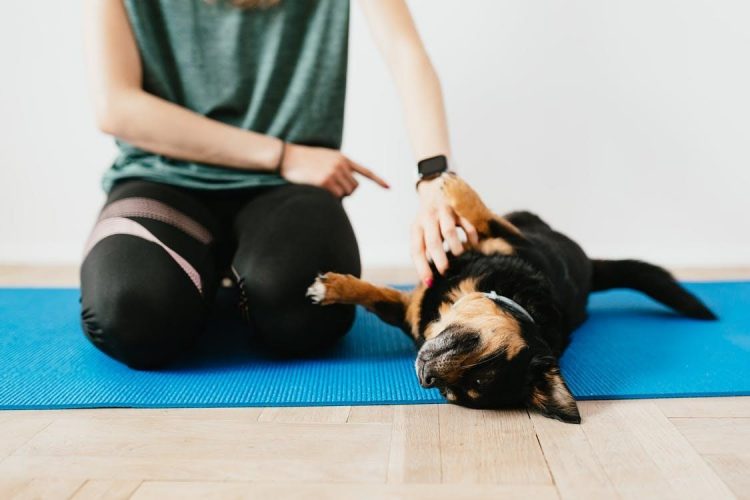In-Home Dog Training 101: How to Completely Train Your Dog
Training your dog is an obligation of every responsible pet owner. Dogs with proper training behave well under any circumstances and will be more sociable and controllable. That is why pet parents need to encourage their dogs to keep up with training classes.
While professional training at a center may cost a lot, that doesn’t mean you need to forego training lessons. In-home dog training is the key!
There has been a surge of people adopting dogs, especially with people spending more time at home than ever before. For the lucky few, they were paired with lovely and obedient canines.
Unfortunately for some, they have to deal with issues like barking, aggression, leash reactivity, separation anxiety, and other issues that require some training to correct. Here we’ll go over some tips you can implement in your own training plan to get the best dog behavior possible out of your pooch.
What is In-Home Dog Training?
As the name suggests, in-home dog training is teaching your canine within the comforts of your own home. In-home dog training can be done by yourself, or by visiting professionals. You can do a combination of both by subscribing to puppy training courses that give you the materials and teach you what to do yourself.
However, if you don’t trust yourself enough, several agencies and dog training services provide in-home dog trainers. These professional dog trainers will go to your home to conduct a one-on-one lesson with your dog to determine their behavior modification needs.
There are pros and cons with a dog trainer coming to your home than your dog going to class, so you have to weigh your options when it comes to training yourself or hiring some private training.
Three Types of Dog Intelligence You Need to Understand
Just like humans, dogs have different types of intelligence too! Dogs are smart, and every pet parent will agree to it. With proper in-home dog training, your dog can respond to commands, and even a few tricks. But before starting any training, you need to familiarize yourself with the type of intelligence your dog has. This will help facilitate easy training.
The three types of dog intelligence based on scientists are:
Instinctive
Instincts are innate in dogs as it is to humans. We are all naturally born with different instincts. In dogs, instinctive intelligence focuses primarily on what the dogs learn from their personal instincts.
Different dogs are bred for different purposes, such as herding, hunting, tracking, and more. As such, instinctive learning happens when your dog learns something inherent to its breed’s nature.
Adaptive
Adaptive intelligence stems up from your dog’s personal experience from the surroundings.
As the dogs experience things from their environment, they apply the experience in problem-solving and in other situations where they need to face things by themselves. In a nutshell, adaptive intelligence sums up what your dog can do for himself.
Working and Obedience
A dog’s working and obedience intelligence come from what they learn from you. As you teach them to do different tasks and commands, they process it on their heads and it becomes a new knowledge for them. Making a dog obey different tasks may be difficult, but it is definitely doable. Start obedience training as early as possible.
Two Most Common Methods of In-Home Dog Training
Dog training uses several methods. If you want to train your dog personally, you need to decide on the training method you need to use. Always remember that in-home training is different than in professional settings. The two most common methods used for in-home dog training are the following:
Aversive-Based Method
This method typically means discipline. Here, you make use of positive punishment as well as negative reinforcement strategies. In the aversive-based method, trainers use techniques such as harsh scolding, shouting, and physical corrections to get the dog to do the things they want.
Reward-Based Method
The reward-based method of in-home dog training is the exact opposite of the aversive-based method. The reward-based method focuses more on giving positive reinforcement to your dog during training.
Through this method, you give rewards to the dog whenever it follows your commands properly. You reward the dog whenever you get it to do something that you want. The usual rewards given to the dog during the reward-based method are belly rubs, pats, and giving delicious treats.

These two methods are truly different from each other. One uses force, while the other one uses care. Even experts have their different opinions over these two methods. So it will also depend on you on which method you want to use.
But of course, we encourage the reward-based method as it gives a more positive approach in in-home dog training lessons. Furthermore, it does not make your dog scared of you, so you will also develop a stronger and healthier bond with your dog along the way.
What Kind of Training Does Your Dog Need?
Proper training starts at an early age. The earlier the dog starts training, the better it can adapt to your teachings and unlearn a behavior problem or behavior issues that can be a cause for concern.
But that doesn’t mean that older dogs cannot be trained. Rest assured that no matter how old dogs are, you can still teach them a thing or two. You can even house train an older dog without a crate as long as you know how to!
House Training
House training should start as soon as you bring your puppy home. This training needs to start at the earliest and requires the most patience. Since puppies tend to gain control over their bladder only at age 12 weeks, you need to have extra patience when dealing with younger ones.
The best way to start housebreaking a puppy is to set a schedule. Consistency is the key when it comes to house training puppies. Setting a specific schedule such as after every meal will program your pooch to remember when it should go.
Also, watch out for signs such as pacing. Since dogs could not speak, being observant with signs will help you know the nonverbal cues when to let your dog go.
Using a catchphrase such as “outside” will also alert your pooch that it is time to do its business outside. This way, whenever the dog hears a specific word, it already knows what to do.
Crate Training
Crate training offers many benefits not only for your dog but for you as well. Crate training also helps house train your dog whenever you are not around. However, make sure not to let it stay inside the crate for too long. Dogs also have a limit in controlling themselves to pee.
Choose a suitable crate that is comfortable for your dog. Make sure that you keep crate training as positive as possible. You do not want your dog to think that a crate is synonymous with a prison, right? Add comfort to the crate by placing some toys and a cozy sheet to keep your dog relaxed.
To know more about crate training, check out another one of our articles here.
Leash Training
Leash training is another essential in-home dog training that your pooch needs to undergo. Knowing how to leash train your dog will conveniently help you control your canine when you’re outdoors.
It also ensures safety, especially when you are on the sidewalk or crossing the street. Walking with a loose leash coaches your dog not to pounce or pull when the leash is attached to him. You can also teach him how to properly walk with the leash on, or even teach him to go side-by-side with you on a bike or skateboard.
Socialization Skills
Dogs need socialization skills as much as humans do. Dogs with proper socialization skills tend to be warmer and more affectionate when around other people and animals. They can also adapt to most situations without unwanted behavior. A dog that is socially skilled is a well-mannered dog.
Basic Obedience Dog Training
Dogs need to recognize five basic yet essential commands. These commands are: come, sit, stay, lie down, and heel. The dog won’t be able to get these commands in just one or two sessions. Hence, you need to lengthen your patience.
Once you’re done with these basic commands, you can proceed with teaching your dog several other tricks and cues such as responding to “yes” and “no.” Or probably giving you a high five!
Few Tips for In-Home Dog Training
– Hiring a professional in-home trainer helps a lot, especially when you do not know how to train your dog on your own. Also, if you have been training your dog for a while now without any progress, you might be doing something wrong. Professional help can come to the rescue, and help you better reach your training goals.
– Training sessions should be concise and on-point. Concentrate on the task at hand. As much as possible, provide a time limit of 15 minutes for each training session.
– When doing the reward-based training, make sure that you establish a consequence for the dog if it does not do the thing that you like. For example, do not give a reward when your dog did something bad.
Takeaway
Dog training is a crucial part of your dog’s life. However, you don’t need to actually go to a training center to get this done. You can hire a professional to visit your house and conduct in-home dog training for your dog.
The beauty of in-home learning is the fact that you can do it yourself too! With patience, the right knowledge, and source materials, you can ace dog training at the comfort of your home.

